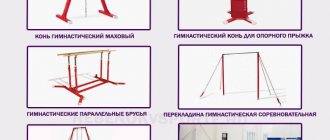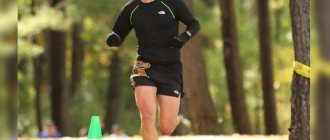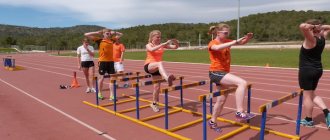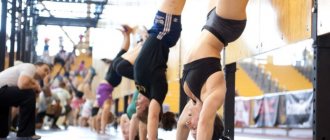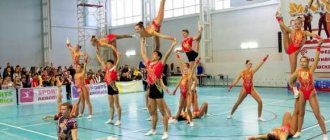Modern methods of sports training are a whole set of technologies that include not only physical exercises. These are smart programs for their implementation, serious psychological preparation, a full-fledged theoretical knowledge base. Fine-tuning to the individual characteristics of athletes includes planning and careful monitoring of program implementation. Today's sports training tools and methods are more like business strategies. All this is included in modern training theory.
Goals and objectives
The purpose, objectives, means and methods of sports training is a topic that has been studied in detail for a long time. It would seem that there can be nothing new here, everything has been said and done a long time ago. But sport changes along with life and business. New approaches and technologies of sports training methods deserve attention and study not only from coaches.
The goal of any sports training is one: to ensure that the trained athlete achieves the highest possible level of fitness and the highest results in competitions. Of course, you always need to take into account the specifics of the sport and the conditions of external circumstances.
The objectives of sports training are a broad and varied concept, we present some of them:
- achieving the necessary volitional and moral qualities for further studies and competitions;
- mastering the main skills: tactics and techniques of a particular sport;
- development of the motor and functional capabilities of the athlete’s body, which bear the maximum load in the chosen sport;
- development of mental preparation to a given required level;
- mastering theory and practice in the sport;
- general improvement and preparation of the athlete for competitions.
The preparation of an athlete is not limited to such tasks. There are main directions, each of them has completely independent characteristics.
Crossfit, what is it?
CrossFit is a type of high-intensity circuit training. Consists of a set of exercises that develop strength and endurance. A distinctive feature of this method is variability.
CrossFit is a patented physical training system. Its founders, US spouses Greg Glassman and Lauren Janay, registered the company's trademark in 2000.
The essence of CrossFit is high intensity and variability. This is its main difference from classic circuit training. What does it mean? To understand, let’s discard foreign words and look at the methodology from the inside.
CrossFit - high intensity method
The first tenet of CrossFit is intensity. Time is the main indicator. Rest is absent or reduced to a minimum.
There are an endless variety of training programs in CrossFit. The sports industry offers fashionable WOD (workout of the day) complexes.
If you put aside the beautiful names, then all the complexes can be divided into three types of training.
1. Time is unlimited. For example: do 5 pull-ups, 10 push-ups, ten squats and 10 leg raises. This is one circle. All exercises are performed without rest. The number of laps and time is unlimited. Work until muscles fail.
2. Time is fixed. In a certain period of time, for example 20 minutes, you need to make as many circles as possible.
3. Time must be reduced. Set the total number of repetitions for each exercise and determine the maximum length of time. The task, if you want to develop, is to reduce training time.
For example: do 50 pull-ups, 100 push-ups, 100 squats and 100 sit-ups. The first training session takes 60 minutes. After a couple of months, the same number of repetitions in 30 minutes. In six months, over 20.
The principle of variability
The second dogma of CrossFit is variability. The body gets used to the same type of physical activity. To progress, you need to “shock” muscle tissue with different loads.
In CrossFit, this rule has been made an axiom. All WOD (workout of the day) complexes are built on the principle of variability. Today, to develop strength and flexibility, you did pull-ups. Tomorrow you will work with rope.
For twenty years, CrossFit has conquered the entire sports world. Crossfit is becoming a classic and it has its own traditions and features. For example, “one circle” is “1 round”.
Another requirement of classic CrossFit. The training process should include three types of exercises. Gymnastics – improve flexibility and endurance. Strength - develop explosive strength. Aerobic – strengthens the cardiovascular system.
The main directions of athlete training
- Technical improvement implies the formation in the athlete of the necessary understanding and specific ideas about sports techniques and skills. Mastering new techniques, expanding the arsenal of technical skills and motor parameters, providing functionality, making the athlete’s technique resistant to various kinds of interfering factors - all this is included in the “technical” direction of sports training.
- The tactical direction includes serious preparation for the upcoming competitions: analysis of the characteristics of opponents and the development of tactics for behavior in the competition. In this direction, modeling of future events is often used with the development of tactical schemes and the selection of optimal options in a given situation.
- Physical training is an increase in the level of motor qualities and functional physiological systems of an athlete. Strength, speed, endurance, flexibility, coordination of movements and their constant improvement - this is the set of tasks of the “physical” block.
- One of the most important areas is psychological preparation. The mere fact that without proper psychological preparation all other components of training can go to zero makes the psychological module absolutely necessary. First of all, this is the ability to manage your mood and general condition during competitions.
- Integral training includes all acquired skills, abilities, knowledge and experience, which are connected into a single whole.
The division of sports training into such areas is quite arbitrary. But it helps to systematize the concept of sportsmanship and determine the means and methods of sports training. Allows effective monitoring of the athlete’s development process.
A.5.1 TRAINING METHODOLOGY
Training is carried out with the aim of developing among personnel: practical skills and correct techniques for working on the mechanisms and instruments of their department; speed and endurance during work, ensuring the fulfillment of standard indicators; skills in performing their duties according to combat schedules and fighting for the survivability of weapons and technical equipment.
This is achieved by practicing the actions of a single sailor by repeating them many times.
Training is divided into specialty training and training at combat posts. This division is made conditionally, because there is no fundamental difference in the methodology of their implementation.
Specialty training is carried out to practice the actions of sailors and petty officers according to their regular positions, and training at combat posts is to practice duties according to combat schedules.
The leaders of specialty training with sailors are squad commanders or team foremen.
Training at combat posts is carried out under the guidance of commanders of combat posts.
In the case where the combat post is served by one person, training with him is carried out under the guidance of his immediate superior. In some cases, training can be carried out with a group of combat numbers performing the same duties under the leadership of combat post commanders or team foremen.
Training in specialty and at combat posts is the basis of combat training of personnel.
The duration of training, as a rule, should not exceed one hour.
The training aims to teach personnel meaningful and correct actions on the instruments and mechanisms of their command (combat post). After the personnel have learned to correctly perform all the required techniques, they should move on to training with time limits on the execution of the technique (action) by trainees, to practicing standard indicators and actions of personnel in difficult conditions, as well as to practicing skills in substitution work.
To constantly complicate the situation, training should be carried out day and night, wearing gas masks and protective clothing, with emergency lighting and in complete darkness.
In all cases, the organization and methodology of training should be as close as possible to real conditions, observing the sequence of transition from simple to complex.
The transition from simple to complex should be carried out as trainees acquire confident skills in performing their duties in simple conditions.
High quality training is achieved by:
exemplary organization of their implementation;
the leader’s preparedness to conduct the training;
timely preparation and verification of the necessary equipment used during training;
maximum use of classrooms (classrooms) and simulators;
control over the actions of each trainee, careful consideration and analysis of his mistakes and timely elimination of them;
solid military discipline of the personnel participating in the training.
The basis of all training sessions is the demonstration by the leader of one or another technique (action), as well as multiple repetitions of those techniques (actions) that the trainees must be able to perform.
Classification of sports training methods
Serious training methods require planning and a detailed exercise program. Methods inherently determine the style and manner of training and can be divided into two large groups: general pedagogical and sports.
General pedagogical methods of sports training also include three subtypes:
- Verbal methods
The name, of course, is a bit boring, but in terms of importance and significance, there is little that can compare with the necessary words of the coach. This may include explaining to the mentee the format, purpose and objectives of the training. Discussion and joint analysis of results and mistakes is the best way to motivate an athlete to work hard. Partnership relationships between a coach and an athlete are the most optimal format of communication during sports training.
- Visual methods
There is no need to prove the effectiveness of visual support for training athletes. This is not just watching videos “how to do it” or visually demonstrating the technique of performing an exercise. This includes filming the exercises themselves, followed by an analysis of errors and methods for correcting them.
- Sensory correction methods
These are specialized ways for an athlete to use a complex of feelings and emotions: imaginative thinking, inner speech, motor sensations to influence the general condition and readiness of the body for training or competition. In short, this preparation is more like emotional self-preparation.
Training theory
Training is not as simple a process as it might seem at first glance. After all, it is not only a set of exercises and a specific program for their implementation. The basis of fruitful training also includes theoretical and psychological preparation, the principle of individualizing the load and adjusting the training process to specific goals.
Even if you create a good exercise program for yourself, you will come across the concept of sports training methods. They essentially determine the manner in which you will conduct your workout.
Modern methods, unlike the ancient Greek ones, have acquired a more formalized appearance. I will now introduce you to their classification.
Sports methods
A large group of exercises refers to strictly regulated exercise methods in sports training. They are used in various combinations, but are strictly regulated in terms of their characteristics and purpose. They can also be divided into two groups:
- aimed at mastering sports technology;
- aimed at developing motor qualities.
Both groups of methods almost always go in combination; they are closely interrelated. Moreover, effective performance of sports training tasks will only be possible when using methods from both groups.
- Methods for mastering sports equipment
Most often, this is the division of a complex movement into simple component elements in order to thoroughly work them out in the future. It is used quite rarely in fitness and bodybuilding; it is more a method of professional sports: mastering the exercise as a whole and in parts. Imitation and leading exercises are used here.
An example of a lead-in workout is running with high hips or jumping for track and field athletes. This is done to “bring up” running and improve its elements - good push-off, for example.
In simulation training, mastering basic movements is specially facilitated. Most often this involves working on simulators of various types and purposes. An example is practicing pedaling movements on an exercise bike for cyclists.
General pedagogical methods
Verbal methods
The athlete's coach must first explain to the athlete the purpose and objectives of the training. Discuss points related to the technique of performing exercises, the style of performing movements and analyze the results already achieved. If necessary, motivate the athlete for the upcoming training.
Such relationships should be present not only in professional sports, but also in ordinary fitness centers, between a personal trainer and his client.
Visual methods
The expression is true here: “it’s better to see once than to hear a hundred times.” For example, it will be difficult to explain the technique of performing an exercise to a beginner in the gym. In this case, the coach should clearly demonstrate the correct biomechanics of movement.
And every time in my articles I encourage you to use visual methods when I ask you to watch a video with the correct technique for performing an exercise.
Methods for developing physical qualities
An extensive group of methods for developing motor qualities includes a whole group of independent techniques. The main methods of sports training are as follows:
- Continuous uniform method
This is continuous work for a certain period of time in a constant rhythm, which can be slow or fast. Aimed at developing the athlete's endurance. The method has a drawback: it adapts too quickly to this type of load. Illustrative examples of the method are rowing over long distances at a constant speed or running 10 or 20 thousand meters at a heart rate of 145–160 beats per minute.
- Continuous variable method
Such workouts are more varied and “more fun”: the load can change as the exercises progress. A good way to “surprise” the body with each workout, so that adaptation to it will not happen immediately. An excellent example of such training would be ice skating at a distance of 8000 m, consisting of twenty laps. One lap is completed in 45 seconds, the next at a comfortable speed. And so alternate all twenty circles. In this case, endurance develops and the aerobic and anaerobic functions of the body increase.
Interval training method
The interval training method is characterized by intermittent loads. Repeated “portions” of work, alternating with precisely dosed rest intervals, have a training effect on the body. The duration of each pause is short. It ensures only partial restoration of the body before the next “portion” of work begins. Thus, in recreational running during interval training, 3-6-minute periods of intense exercise alternate with rest of the same duration, during which low-intensity exercises are performed. The interval method has a number of options that differ in the length of the segments and the speed of overcoming them. It is most suitable for developing endurance and speed (depending on the rest interval).
Endurance techniques
- Interval method
Here the intervals between work and rest alternate. Rest time is strictly regulated. An excellent example of using the method in fitness is cardio interval training, which is recommended only for athletes with good physical fitness. The duration of rest can be determined in the range from a few seconds to three minutes, everything depends on the duration of the main part of the exercise - intense load.
In elite sports, series for the development of special endurance are extremely popular: for runners 400 m x 10 or for rowers 1000 m x 10.
For sprinters, their own schemes are used: 60 m x 3 are run at maximum speed, followed by a rest for five minutes; 30 m at maximum speed, then 200 m of slow running.
A progressive option is a gradual increase in load or range of motion. For example, running along segments of increasing length, or running along identical segments, but with increasing speed.
The descending option includes a decreasing load; swimmers love to use it. In this case, the length of the segments decreases with a simultaneous increase in swimming speed.
- Repeat method
A favorite method of bodybuilders, in which after a given number of repetitions there is a rest until energy resources are completely restored. In elite sports, this method is used to prepare an athlete for competitions - this is a good model of competitive loads.
- Circuit training method
A great way to build endurance through continuous exercise. Everything is done seamlessly and without interruptions with several repetitions of the complex in a circle. The advantage of the method is also its main feature: there is a gradual increase in load with a simultaneous increase in the power of working movements.
In bodybuilding, circuit training is included in the program during the “drying” stage to increase calorie consumption.
Repeated training method
Repeating loads with sufficient rest intervals between them is the essence of the repeated training method. For example, in running, this method is characterized by the use of both standard and different length and intensity segments, repeated at rest intervals that are not planned in advance (in terms of time or distance of slow recovery running). The combination of loads creates favorable preconditions for maintaining physical strength and performing subsequent work at a sufficiently high speed.
In the first period of training, it is better to increase physical activity by increasing the total volume of exercises, and later by increasing the intensity of their implementation. This ensures that the body adapts to new increased loads in accordance with increasing functional capabilities.
Game methods
Characteristics of methods of sports training for game and competitive types include the following:
- Game method
A way of developing athletic skills for games that is extremely common in almost all sports: even weightlifters play games before competitions. First of all, this is a high positive emotionality of the environment and constantly changing situations. This requires solving tactical and psychological problems as the game progresses. Initiative, courage, independent decisions are qualities that are necessary for any athlete. Thus, game training contributes to the diversified development of the athlete. Also important is the fact of switching to another type of activity, which is useful for recovery and adaptation or maintaining the level of physical fitness.
They are based on a certain order of combining and regulating the load in the process of reproducing an exercise, or one or another way of ordering the actions of those involved and the conditions for their implementation.
The essence of a particular method of improving motor skills and the targeted development of motor abilities largely depends on the chosen method of regulating and dosing each of the load parameters: intensity of duration, number of repetitions of exercises, intervals and nature of rest.
The uniform method is characterized by the fact that physical exercise is performed continuously with a relatively constant intensity.
The intensity can be considered constant if its fluctuations do not exceed 3% of the average.
There are two variants of this method:
• method of long-term uniform training;
• method of short-term uniform training
The first option is characterized by performing work of low intensity for a long time. Energy supply to muscle activity is carried out through aerobic mechanisms of energy production, i.e. oxygen consumption corresponds to oxygen needs. Heart rate ranges from 130 to 180 beats/min. The duration of continuous operation can range from 15 to 90 minutes or more. This option helps improve the aerobic component of endurance.
In the second option, the work is more intensive. Its duration decreases. Exercises are performed in a mixed aerobic-anaerobic mode. It is used to educate and improve the sense of pace, as well as to develop the aerobic-anaerobic component of endurance.
The advantages of the uniform method are, first of all, that it makes it possible to perform a significant amount of work, helps to stabilize motor skills, increase the power of the heart, improve central and peripheral blood circulation in the muscles, the power of the external respiration apparatus and the endurance of the respiratory muscles, and improve the coordination of the work of internal organs and muscles. Long-term loads contribute to the development of strong-willed qualities in them: perseverance, perseverance, etc.
The disadvantages of the uniform method are the body’s rapid adaptation to it, which reduces the training effect. Continuous duration of work with constant intensity leads to the fact that over time a certain familiar standard tempo of movements is developed.
The alternating method is characterized by sequential variation of the load during the continuous execution of an exercise, by purposefully changing the speed of movement, tempo, rhythm duration, amplitude of movements, magnitude of effort, changing movement technique, etc.
An example of this would be changing running speed over a distance, the pace of play, and performing technical techniques in hockey during each period.
The training effect on the body of those involved when using the variable method is provided during the work period. The direction of influence on the functional properties of the body is regulated by changing the mode of operation and the form of movements.
The tasks solved using the alternating method are very diverse: developing speed capabilities and endurance (general and special), expanding the range of motor skills, increasing coordination of movements, acquiring certain tactical skills, and developing volitional qualities.
The alternating method is used in cyclic and acyclic exercises. In cyclic exercises, loads are mainly regulated by varying the speed of movement. It can vary from moderate to competitive. The nature of physiological changes in the body depends on varying the speed and duration of the exercise, which, in turn, leads to the development of aerobic or aerobic-anaerobic capabilities.
In acyclic exercises, the variable method is implemented by performing exercises that continuously change both in intensity and in the form of movements.
The repeated method is characterized by repeated exercises at rest intervals, during which a fairly complete restoration of performance occurs.
The use of this method provides a training effect on the body not only during the exercise, but also due to the summation of fatigue of the human body from each repetition of the task.
Problems solved by the repeated method: development of strength, speed and speed-strength capabilities, speed endurance, development of the necessary competitive tempo and rhythm; stabilization of high-speed movement techniques, mental stability.
This method is used in both cyclic and acyclic exercises. The intensity of the load can be: 75-95% of the maximum in this exercise, or near the maximum and maximum - 95-100%. The duration of the exercise may also vary. For example, in running, rowing, swimming, work is used in short, medium and long segments. The speed of movement is planned in advance, based on the personal record for this segment. Exercises are performed in series. The number of repetitions of exercises in each series is small and is limited by the ability of the trainees to maintain a given intensity (speed of movement, tempo of movements, amount of external resistance, etc.). Rest intervals depend on the duration and intensity of the load. However, they are installed in such a way as to ensure restoration of performance before the next repetition of the exercise.
In cyclic exercises, repeated work over short periods is aimed at developing speed abilities. At medium and long distances - speed endurance.
Moving with high intensity—in skating, walking, and other exercises over relatively long periods—helps develop a “sense of competitive pace” and improve movement technique. In this regard, the repeated method is sometimes called the repeated-tempo training method.
The nature of the energy supply during short-term work is mainly anaerobic, while during medium and long periods it is mixed, i.e. aerobic-anaerobic. In acyclic exercises (weightlifting, jumping, throwing), along with improving movement techniques, this method is used mainly to develop strength and speed-strength abilities.
The interval method is characterized by repeated repetition of the exercise at certain rest intervals.
The essence of this method is that during repeated execution, the intensity of a single load should be such that the heart rate by the end of the work is 160-180 beats/min. Since the duration of the exercise is usually short, oxygen consumption during exercise does not reach its maximum values. During the rest pause, despite the decrease in heart rate, oxygen consumption during the first 30 s increases and reaches its maximum. At the same time, the most favorable conditions are created for increasing the stroke volume of the heart. Thus, the training effect occurs not only and not so much at the time of performing the exercise, but during the rest period. Hence the similar name of this method.
Rest pauses are set in such a way that before starting the next repetition of the exercise, the pulse is in the range of 120-140 beats/min, i.e. Each new load is given at the stage of incomplete recovery. Rest can be active or passive, exercises are repeated in series. The series is terminated if, at the end of standard rest pauses, the heart rate does not fall below 120 beats/min. The total number of repetitions of exercises can be from 10-20 to 20-30.
The interval method has a number of options, which are based on various combinations of the components of the load (duration, intensity, number of exercises, etc.). Such diversity is associated with the solution of specific problems, the level of physical fitness, the health status of those involved, the type and nature of physical exercise. But the essence of the physiological effect in all these variants of the interval method remains approximately the same.
The circular method is the sequential performance of specially selected physical exercises that affect various muscle groups and functional systems, such as continuous or interval work. For each exercise, a location is designated, which is called a “station.” Usually there are 8-10 “stations” included in the circle. At each of them, the student performs one of the exercises (for example, pull-ups, squats, push-ups, jumping, etc.) and walks the circle 1 to 3 times.
This method is used to develop almost all motor abilities.
Game method. The basis of this method is plot-organized motor activity, which is based on the free choice of ways to achieve a goal and the satisfaction a person receives.
The gaming method is not necessarily associated with any generally accepted games, for example hockey, badminton, volleyball, but can be applied to any physical exercise (running, jumping, throwing, etc.), especially when conducting classes with preschool and school children age. It is a method of comprehensive improvement of a person’s physical and mental qualities. With its help, various tasks are solved: the development of motor abilities, the cultivation of courage, determination, resourcefulness, initiative, independence, tactical thinking, and the improvement of motor skills. The most characteristic features of the gaming method:
1. Pronounced rivalry and emotionality in game actions (the method allows you to model relatively complex relationships between people).
2. Extreme variability of the conditions of warfare and the conditions for carrying out actions.
3. High requirements for creative initiative in actions.
4. Lack of strict regulation in the nature of actions and workload.
5. Complex manifestation of various motor skills and abilities.
The disadvantages of this method include the limited possibility of dosing the load and forming a new, especially complex motor skill.
The competitive method is a way of performing exercises in the form of competitions. The competitive method is used to develop physical, volitional and moral qualities, improve technical and tactical skills. It can be used in elementary forms (for example, who will hit the target more accurately), in the form of semi-official or official competitions. This method, having much in common with the gaming method, differs in that it does not have a plot content.
Typically, the appropriateness of using this method depends on the type and nature of physical exercise, gender, age, physical fitness, health status, properties of the nervous system and temperament of those involved. The most characteristic features of the competitive method:
– subordination of all activities to the task of winning in accordance with the rules;
– stimulation of maximum manifestations of motor and personal capabilities and qualities, identifying the level of their development;
– ensuring maximum physical and mental stress.
But it must be remembered that the competitive method provides relatively limited opportunities for dosing the load and for directly managing the activities of those involved.
Competitive approach
- Competitive method
This is a kind of model of a competitive atmosphere, which is regarded as one of the most optimal ways to increase training effectiveness. The competitive component can be complicated or, on the contrary, carried out in easier conditions. The main thing is the development of different aspects of an athlete’s training. In model competitions, the athlete is stimulated and demonstrates the maximum level of physical and motor abilities. Moreover, this level is revealed precisely during such training. Here the athlete’s ability to perform maximum load is assessed. In such conditions, volitional qualities are cultivated in the most effective way.
Strength training what is it
Strength training is a type of physical activity that increases muscle mass and develops static muscle strength. Examples of strength exercises: barbell squats, bench presses, deadlifts, barbell holds.
The training process is built according to the following scheme: load – full recovery – load.
Strength training methods
The strength training method is a way to develop the muscular system by systematically increasing the weight load.
The basis of the training process is separate training. One day one muscle group (maximum two) is worked, another day another.
The principle of strength training is to “load” one muscle to failure with different exercises. Give her a few days to rest. Then repeat or increase the load. This training process provokes the growth of muscle tissue.
Let's consider the method of dividing training into parts using the example of split training.
Split is a type of strength training
Split is a program of separate strength training. The term “split” is derived from the English “split” - to split, divide.
The classic split training program consists of a three-day cycle. At each workout, basic exercises are performed first. Then insulating.
Rest between sets from 1 to 3 minutes or more. The athlete must have fully recovered strength before the next approach.
Here is a sample schedule for a week.
Monday – chest, shoulder girdle, triceps. Bench press – 4 sets of 6 reps. Reduction of arms in the butterfly simulator - one drop set. Bent over dumbbell press – 3 sets of 10 reps. Reverse dumbbell press – 3 sets of 10 reps.
Wednesday – muscles of the legs and abdomen. Barbell squats – 4x6. Leg curls on the machine – 3x8. Leg extension on the machine – 3x8. Leg raises, 4x30. Crunches 3x30.
Friday – back and biceps. Deadlift – 3x8. Pull-ups – 3x12. Bent-over barbell row – 3x10. Standing biceps curl – 4x8. Lifting dumbbells for biceps alternately - 4x12.
Complications and simplifications
You can complicate competitive models in different ways:
- play in the rain, heat or in the mountains - in difficult environmental conditions;
- change the dimensions of the playing fields: release an expanded team of players onto a smaller field - create artificial crowding on the field.
- arrange fights with several opponents at once - complicated models of fights or boxing matches;
- “slip in” inconvenient opponents who play by their own rules or without any rules at all;
- add various types of weights in the form of various projectiles to the game process;
- limit the respiratory rhythm in cyclic sports - running, swimming, rowing, etc.
You can also make the competitive training format easier in a variety of ways:
- shorten the length of distances in cyclic sports disciplines;
- reduce the duration of fights and fights in martial arts in the ring;
- make sports equipment lighter wherever possible: reduce the height of the volleyball net, make a football or water polo ball smaller and lighter, etc.;
- use the handicap principle: give a head start to a weaker participant in the competition, for example, start earlier on a running distance or stipulate in advance an advantage in the number of goals scored.
Mixed and special forms of strength training[edit | edit code]
In addition to the basic methods described above, there are a large number of other training methods, which, although they are in addition to the basic ones, have their own characteristics (Boeckh-Behrens, Buskies, 2001; Weineck, 2007). Below is a general overview of such methods. They are typically used when training special target groups of athletes, such as bodybuilders or elite athletes.
Supersets (super sets)
The goal of supersets is to push trained muscles to the highest degree of exhaustion possible through intense exercise or high repetitions. The point of this is to cause intense irritation, which even in professionals has a positive effect on muscle building.
- Supersets for training antagonist muscles
.
This is a type of superset in which agonistic and antagonistic muscle groups are trained in successive sets (for example, after triceps exercises, a series of biceps exercises is immediately performed).
- Supersets for training agonist muscles
. A high degree of exhaustion of the same muscle is achieved by performing two different exercises (for example, for the leg extensor muscle, the leg press is performed first, and then the squats). This approach can be used as the basis for a large number of different exercises (trisets, giant sets with 4-6 exercises for one muscle).
Burns approaches
- After an exhaustive set of 8-10 repetitions, the movements are performed as much as possible 5-6 more times until a burning sensation appears in the muscle.
Forced Repetitions
- After an exhaustive approach with 10 repetitions, it may be necessary, for example, the help of a partner to continue the movements performed (another 3-4 repetitions).
Stutter Repetition
- Partial repetitions are the performance of exercises with a limited range of motion, i.e. the weight is lifted, and then lowered a few centimeters, and from the same position raised a little higher, and then lowered, but not completely. Repetitions are performed until the weight is lifted to its maximum height.
Multiple peak contractions
- In a position with maximum muscle tension, the movement is paused several times and resumed with a small amplitude.
Pyramid training
- The number of repetitions and weight in the approaches vary. This type of training might look like this: The first set of 10 repetitions uses 70% (of 1 RM) of the weight. The second set consists of 7 repetitions with a weight of 80%, the third set of 3 repetitions with a weight of 90%, and the last set of one repetition with a weight of 100%.
- The last approach can be omitted and a workout resembling a “truncated pyramid” - with an emphasis on body weight - or a “top of the pyramid” - with an emphasis on intramuscular coordination. When training in the form of a “double pyramid”, the weight of the weight increases and the number of repetitions decreases (from 10 repetitions in the first approach to 5 repetitions in the third), after which the weight of the weight decreases and the number of repetitions increases (from 5 repetitions in the fourth approach to 10 repetitions in the sixth).
Pre- and post-fatigue
- This method consists of preliminary fatigue of the target muscle, the training of which is carried out in the form of a complex exercise. For example, it is sometimes advisable to pre-exhaust the pectoralis major muscle (m. pectoralis major) on a butterfly machine before performing a bench press.
Method 120-80
- The trainee lowers a super-heavy implement with a weight equal to 120% of 1 RM, with muscle resistance. After this, the weight of the apparatus is reduced (up to 80%) so that the athlete can overcome it. This exercise can only be performed with the help of a partner, and the number of sets of approximately 5 repetitions should not exceed 3-4.
- In the most general sense, this includes training methods using a supramaximal weight load, in which the athlete, during the eccentric phase of the movement, puts all his effort into slowly lowering the weight (negative repetitions).
High intensity workout
- HIT (high-intensity training)
involves forms of training aimed at achieving maximum load on specific muscles (Giessing, 2008). This term refers to a special session in which training continues after the maximum strength value has already been achieved. The muscle continues to be subjected to further stress at a high degree of intensity even after so-called immediate muscle failure has occurred, continuing to perform, for example, forced sets or burnout sets (see above). Of great importance when performing exercises is the speed of movements, which can be represented in the following form: 4-0-2-1 (4 s - eccentric movements, immediately after them 2 s - concentric and then after 1 s repetition). Due to the high intensity, the training volume should be reduced (one high-performance approach is enough), and the recovery period between training the same muscle should be significantly increased.
Split type training
- This type of training opens up for professional athletes the possibility of larger volumes of training with greater frequency due to the fact that only certain parts of the body are trained in each session. There are many different options for how to divide your workout into segments. For example, one lesson can be devoted only to “pull-type” movements, while in another lesson you can train only “press-type” movements. Sometimes the workout is divided into exercises for the upper body and exercises for the lower body. Split type training, despite the fact that it increases the volume of training per week, provides sufficiently long rest phases for individual muscles.
Isometric strength training
- Isometric strength training involves developing strength without changing muscle length. Here you can use your own body weight as a burden, for example, while maintaining a half-squat position at a certain angle at the knee. During static strength exercises, additional weights are sometimes also used (dumbbells, barbells, participation of a partner). In isometric training, maximal tension can be developed in response to insurmountable resistance, or submaximal tension can be maintained as long as the athlete has enough strength. At the same time, as fatigue increases in the muscle, the level of maximum activity is also achieved with virtually no additional use of external weights. Isometric training should be aimed at achieving very specific goals, such as rehabilitation, and should be interspersed with other methods. In this case, a type of muscle load often arises that is not typical for many sports.

